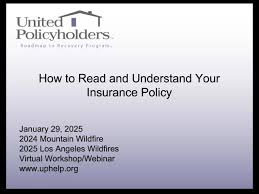
How to Read Your Insurance Policy Like a Pro
Let’s be honest—most people never actually read their insurance policy. It’s long, packed with legal jargon, and written in a way that seems designed to confuse.
But here’s the truth: not understanding your policy could leave you underinsured, overpaying, or completely unprotected when it matters most.
If you’ve ever blindly signed or renewed your policy, this guide is for you. Here’s how to break it down section by section, so you can read your insurance policy like a pro—and avoid nasty surprises when filing a claim.
1. Start with the Declarations Page (a.k.a. the “Dec Page”)
Think of this as the summary of your coverage. It’s usually the first few pages of your policy and includes:
-
Your name and address
-
Policy number and effective dates
-
Description of the insured property (home, car, etc.)
-
Coverage limits and deductibles
-
Premium amount
-
Listed beneficiaries or additional insured parties
✅ Tip: This is the page you’ll refer to most often. Make sure everything here is accurate and current.
2. Understand What’s Covered—and What’s Not
Head to the section labeled “Coverage” or “Insuring Agreement.” This outlines what the insurer promises to cover.
Examples:
-
In auto insurance, this could include liability, collision, and comprehensive coverage.
-
In home insurance, it includes your dwelling, personal property, and liability protection.
Then look for the “Exclusions” section. These are the situations or events your policy won’t cover, such as:
-
Floods or earthquakes (unless separately added)
-
Normal wear and tear
-
Intentional damage
-
Certain high-risk activities
⚠️ Always read the exclusions just as carefully as the coverage. They’re where many denied claims begin.
3. Know Your Deductibles
A deductible is the amount you pay out of pocket before your insurance kicks in.
-
Higher deductible = Lower monthly premium (but more you pay during a claim)
-
Lower deductible = Higher premium (but less you owe when filing)
🧮 Example: If your deductible is $1,000 and the damage is $5,000, you pay the first $1,000 and your insurer pays $4,000.
Make sure your deductible matches your current financial comfort zone.
4. Review the Limits of Liability
Every type of coverage in your policy has a limit—the maximum amount your insurer will pay for a claim.
Examples:
-
$100,000 in personal liability coverage
-
$500,000 in dwelling coverage
-
$15,000 for medical payments to others
💡 Tip: Check if your policy includes sub-limits—smaller limits for specific categories, like jewelry or electronics.
If your valuables exceed these limits, ask your insurer about riders or endorsements for extra protection.
5. Pay Attention to Endorsements and Riders
These are add-ons or modifications to your base policy.
-
Want protection against identity theft? That’s an endorsement.
-
Added coverage for a home-based business? Also an endorsement.
Sometimes these are included automatically, but often, you need to request and pay for them.
📌 If you assume you’re covered without checking, you could be left high and dry when you file a claim.
6. Know the Conditions
The “Conditions” section lists your responsibilities as the policyholder.
These might include:
-
Reporting a claim within a certain timeframe
-
Taking steps to prevent further damage after an incident
-
Cooperating with investigations or providing documentation
Failure to meet these conditions could result in a denied claim, even if the damage was otherwise covered.
📋 Always know what’s expected of you before and after a loss occurs.
7. Watch Out for Policy Language That Sounds Good (But Isn’t)
Some phrases sound protective but are actually limiting:
-
“Actual Cash Value” means your item is reimbursed based on its depreciated value (not what it costs to replace it today).
-
“Named Perils” coverage only covers incidents that are specifically listed—if it’s not named, it’s not covered.
-
“Replacement Cost” is better—it reimburses you for the cost of a brand-new item, not a used one.
🕵️ Pro tip: Always ask for replacement cost coverage when possible, especially for personal belongings.
8. Call Your Agent and Ask Questions
Still unsure about parts of your policy? That’s okay—and it’s smart to ask.
Good questions include:
-
What’s my biggest gap in coverage?
-
Are there any hidden sub-limits?
-
Is there a better policy option for my current life situation?
-
What discounts am I not using?
Your agent’s job is to help you understand—so don’t be afraid to push for clarity.
Final Word
Insurance policies aren’t designed for easy reading—but that doesn’t mean you can afford to skip them. By understanding the structure and language of your policy, you can protect yourself more confidently, avoid costly mistakes, and even save money.
So the next time you receive that renewal notice or new policy packet, don’t toss it in a drawer. Open it, break it down—and read it like a pro.
